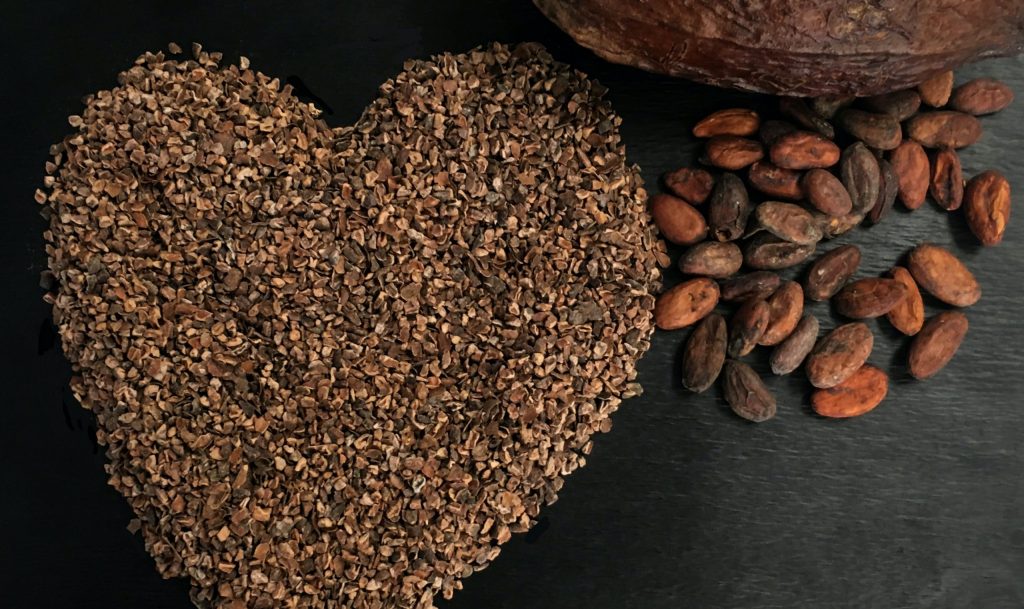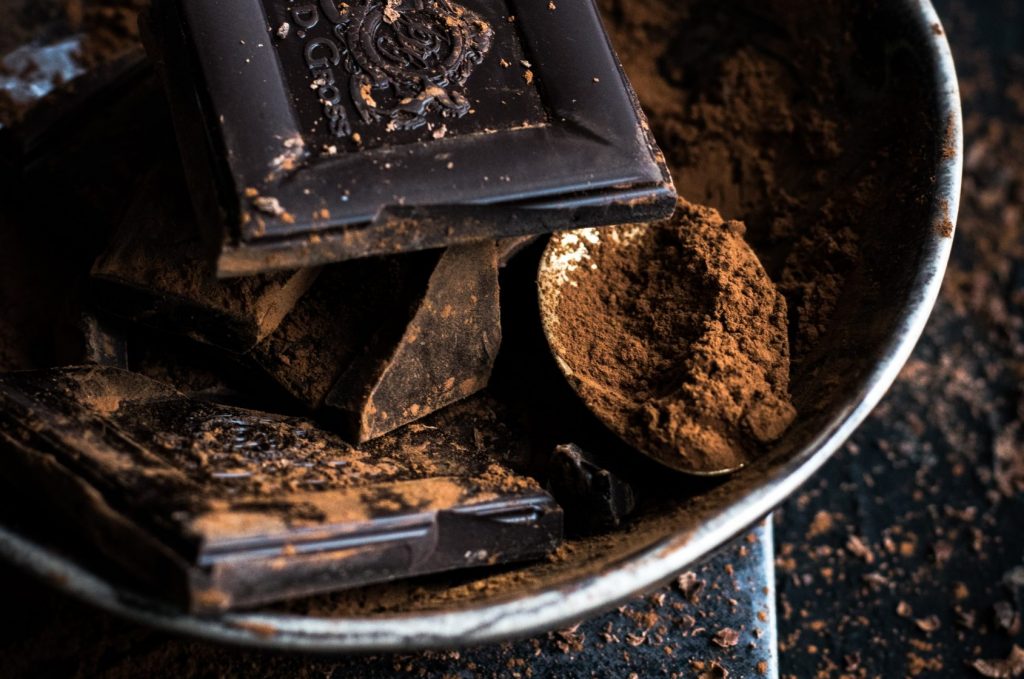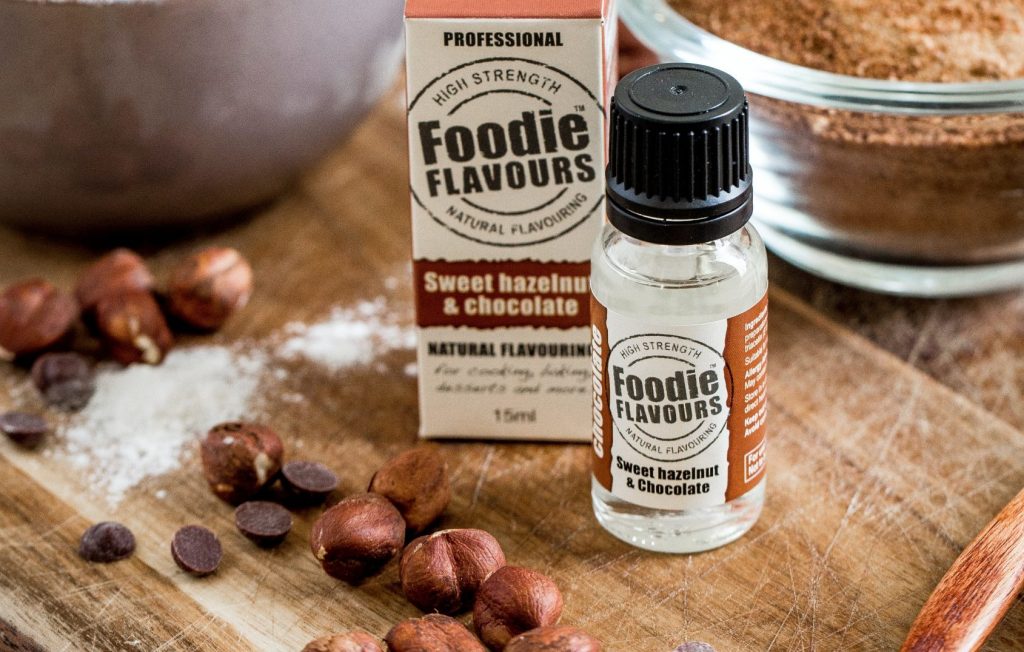How to Use Chocolate in Your Beer
Thursday, April 9th, 2020By Jesse Southard
Personally, I love chocolate beers. Before I was a homebrewer, I took a trip to the Czech Republic and had my fair share of beer. However, a chocolate beer stood out to me called Opat Chocolate Stout. I remember thinking how did they get so much chocolate flavor into this beer? Anyway, looking back I laugh because adding chocolate to your beer, in my opinion, is one of the easiest ways to elevate your beer’s flavor. You can bring out more chocolate flavors in a base recipe or build a recipe around chocolate. Either way, you need to have some basic knowledge on how to use chocolate in beer, what type of chocolate to use, and some tips on how to get the flavors right. The end goal is to have a chocolaty beer without the beer tasting artificial. So, my advice is to always use whole ingredients such as cocoa nibs, 100% cocoa powder, or pure chocolate extract. Let’s dig a little deeper.
Using Cocoa Nibs In Your Beer

Cocoa nibs are the closest thing you will find to the raw cocoa bean outside of the tropical regions that it is grown. The bean is harvested, fermented, and crushed to produce a raw cocoa nib. The nibs are then either packed for sale as a raw item or slightly roasted to produce a richer chocolate flavor. At any rate, if you buy raw or roasted you should taste the product before brewing with it to ensure it has the flavor you are looking for. If you are wanting control of the chocolate flavor, buy the raw nibs and roast them in your oven at home. You can accomplish this by setting your oven at 350 degrees Fahrenheit (177 degrees Celsius), then laying the nibs on a baking sheet and roasting them at five-minute intervals until they have reached the flavor you are looking for. If you fail to roast raw nibs before adding them to your beer, they will impart little-t0-know chocolate flavor. You can use cocoa nibs in any step in the brewing process.
In The Mash
If using cocoa nibs in the mash, you should crush the nibs as you would crush your grains and add them in with the rest of your grain bill. Adding to the nibs to the mash will extract a more bitter dark chocolate flavor which is preferred in more robust stouts and porters.
In the Boil
You can add the cocoa nibs to the boil which will also extract a more bitter dark chocolate flavor. When adding to the boil, I suggest pitching them into a hop spider so you can strain them after the boil.
Primary & Secondary
You can add them to your primary or secondary by first soaking them in vodka overnight. Pitching earlier in fermentation allows for more flavor extraction. Pitching in primary provides a more mellow dark chocolate flavor which is preferred in porters and brown ales. Pitching in secondary will produce a more subtle chocolate undertone which can be experimented with in nontraditional ways.
Using 100% Cocoa Powder In Your Beer

Cocoa powder is a more refined version of cocoa nibs. It has already been roasted to the manufacturer’s specifications and milled into a fine powder. You have no control over the roast factor; however, cocoa powder is a great way to get chocolate flavor into your beer. I do caution about using only 100% cocoa powder as anything else will have fillers, fats, evaporated milk, or other unnatural ingredients. 100% cocoa powder, in my opinion, is the most convenient cocoa product because it is sold in nearly all big box stores and is relatively inexpensive.
Using cocoa powder in your beer is fairly easy as you can add it at any stage to achieve your desired results.
In the Mash
You can add cocoa powder directly to the top of your grain bed when mashing or sparging. You do not want to mix this in when you dough in unless you enjoy having a stuck sparge. When you are finished doughing in, wait 15 minutes and sprinkle your desired amount of cocoa on top of the mash. Adding to the mash allows the chocolate flavor to be extracted while leaving the powder behind when lautering. You can achieve a more subtle chocolate flavor by adding it to the top of the grain bed when fly sparging. If you batch sparge, you can achieve the same effect by adding the cocoa after adding your sparge water. Both methods work perfectly for use in stouts, porters, brown ales, and out of style experiments.
During the Boil
You can add cocoa powder directly to the boil, any time during the boil, or at flame out. Adding at these times, gives you the same result in my experience. Adding cocoa to the boil provides a darker bitter chocolate flavor which is desirable in robust stouts and porters. If adding to the boil, leave the black sludge behind when transferring to the fermentation vessel.
Primary & Secondary
You can also add cocoa powder directly to primary or secondary. To keep things sanitized, you will want to make a vodka cocoa slurry by mixing cocoa powder in vodka. Just like cocoa nibs, adding cocoa powder in primary provides a more mellow dark chocolate flavor which is preferred in porters and brown ales. Pitching in secondary will produce a more subtle mellow chocolate undertone which can be experimented with in nontraditional ways.
Using Chocolate Extract In Your Beer

The simplest way to add chocolate flavor is by adding a chocolate extract. Now, there are plenty of chocolate-flavored extracts on the market, but we do not want to end up with an artificial tasting beer. So, do yourself a favor and ensure you are using pure chocolate extract. Unlike using cocoa nibs or cocoa powder, extract needs no contact time to achieve the chocolate flavor you want. However, it will impart an alcohol flavor that may be detectable in lighter beers. You can make your own extract at home with cocoa nibs and distilled spirits. A simple extract can be made by adding 6 ounces vodka and 3 ounces of cocoa nibs. Let them soak for a week and then straining off the nibs. You can get quite creative with cocoa nib roast time, extraction time, and type of distilled spirit. I personally like to soak my nibs in bourbon when making chocolate stouts.
To use pure chocolate extract in beer you will want to add it any time after the boil. However, since this product needs no contact time to extract the flavor, you can easily add too much. So, I prefer to add extract at packaging. When adding at packaging, you want to minimize oxygen exposure so you can rack off a few cups of beer to experiment with before adding the extract to your brew. I add drops of extract from an eyedropper to each glass, starting with three and going up three with each glass. You can experiment with more or less extract in each glass, just remember how many drops you added to reach your desired result. If you are adding extract to a five-gallon batch there are 80 cups in a gallon, so if you like nine drops of extract in a cup, you will need to add 720 drops of extract (9×80=720). According to Traditional Oven, there are 98.5 drops in one teaspoon, which means you would add just shy of 7.5 teaspoons (720/98.5=7.3) of extract to a five-gallon batch of beer.
Chocolate is a sweet treat that can be enjoyed in many ways; however, there is nothing like having a nice chocolate beer, especially one that you made yourself. It can be a nice compliment to freshly baked cookies, campfire smores, or even as a dessert beer. Whether you are chasing after that one chocolate beer of your dreams, or just want to experiment with chocolate, I hope that this article helps you in your homebrewing endeavors. Cheers!
Recipe Spotlight
Bill’s Double Chocolate Milk Stout is a great way to test the waters with several of these chocolate-flavor producing methods.







Sorry, comments for this entry are closed at this time.